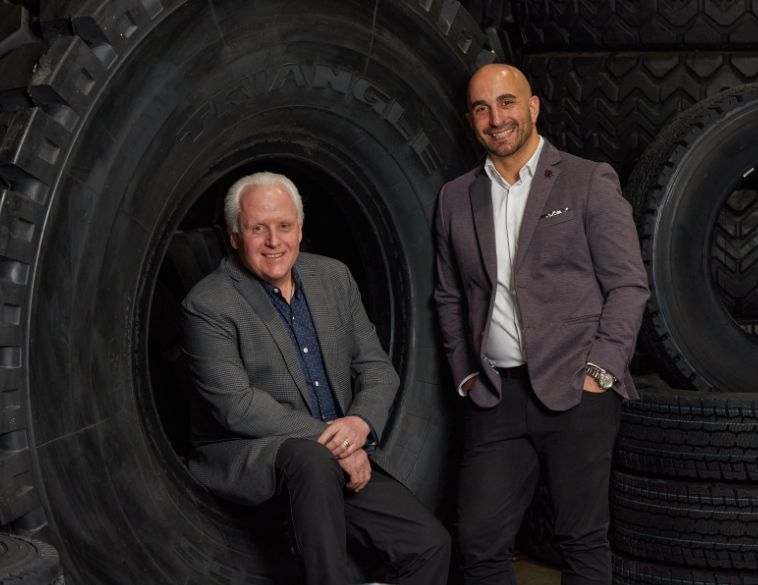The right recruitment strategy will help you stand out from the crowd, and attract top talent.
Hiring, training and retaining quality employees is an ongoing challenge in the automotive industry. While good help may be hard to find, tire retailers who approach the hiring process with a plan and a vision, are more likely to find and retain top talent.
In the “good ol’ days,” recruiting was as easy as placing an ad in the local newspaper or hanging a “help wanted” sign in the window. In 2024, employers need to be a bit more creative, and a lot more tech-savvy.
“When it comes to hiring staff, we’re trying to explore new technologies,” says Doug Reid, Owner/Operator of OK Tire in Innisfail, Alberta. “Using online platforms like Indeed, or social media, allows us to target our ads a bit better.”
Some tire retailers allow staff to post short videos on TikTok, YouTube, Instagram or other social platforms. By showing their employees at work, engaged in day-to-day activities, these retailers are building a brand, and giving potential employees an idea of what their work life could look like.
While using new technologies may be interesting and innovative, Reid says that he still employs time-tested approaches that include reaching out to local schools, networking with other businesses and word-of-mouth. “In addition,” he adds, “employee referrals are often successful, since existing employees can vouch for a candidate’s skills, and can tell you if an individual would be a good fit for the culture in your business.”
Bragging rights
Reid points out that employers need to brag a bit about their businesses and their brands if they want to attract the best employees. “We brag about our company’s values and culture, and our commitment to innovation,” he adds. “We brag about the benefits we offer, and we invite our staff to brag about how great it is to work here.”
Sophie Corriveau, Automotive Recruitment Advisor at auto-jobs.ca agrees. “You need to establish a recruitment strategy to make the job offer attractive and stand out from the crowd,” she says. “The company’s job description and benefits should arouse curiosity and appeal to the candidate.”
Reid likes to highlight opportunities for career growth and advancement within his business. “I make sure some of these points are integrated into an ad when we’re advertising for an open position,” he says, “and I certainly like to bring it up during the interview process.”
No experience necessary
One of the strategies employed by some businesses today is recruiting from outside the automotive industry. “It’s good to look for experienced employees, but it’s also good to broaden your search and recruit candidates from outside the automotive industry,” Corriveau explains. “What you’re looking for is the candidate’s attitude, expertise, and skills. They may not always have the typical experience you’re looking for, but they could offer added value for your company.”
Reid says that recruiting from outside the industry has both pros and cons. “I’ve done both,” he says. “Experienced hires can hit the ground running with minimal training, they often already possess knowledge of your products and terminology, and they require less training. So, there could be lower up-front costs associated with onboarding.”
Experienced employees come with industry insights and the best practices they learned from previous roles, Reid adds. “However, candidates from outside the industry bring a fresh perspective and innovative ideas, along with diverse skill sets that can benefit your business,” he adds. “They also offer new approaches to customer service, new sales strategies, and operational improvements. Some of my best hires are people from outside the industry.”
Reid says he has one automotive tech on staff who was hired with a computer science background. “He didn’t have any previous experience with tires or anything automotive,” Reid explains, “but he has a passion and a love for it, and he’s now an apprentice on our team.”
Onboarding and training
Once a new recruit is hired, the onboarding and training scenario will likely be a little bit different for those with experience, and those who may be new to the industry. “Training is essential to the smooth running of the business, and recruiting from outside the industry means that there will be more time required to learn new skills,” Corriveau explains.
Beyond learning new skills, however, training and onboarding are meant to integrate the new employee into the culture and structure of your business. “For any new employee,” Corriveau says, “onboarding and training from day one is paramount and plays a crucial role in employee retention. It is from this moment that we create the sense of belonging in new employees.”
Corriveau explains that a well-integrated employee is more likely to stay with the company for the long run, and she recommends designating a resource person from within the company who can help the new employee settle into their new role. These insiders should make themselves available to the new recruit for the first few weeks of training, just to make sure the new staffer is off to a good start.
Retaining employees
One of the last hurdles every company must overcome is employee retention. Once you’ve hired and trained them, you’ll need to hold on to them. “Employees need to feel valued,” Corriveau says. “They need to have a sense of belonging, and they need to feel that they are contributing to the team.”
OK Tire’s Doug Reid asked his employees why they’ve stuck with him. “Overwhelmingly, they said that it was the environment they work in, and the people they work with,” Reid says. “They feel like they are part of a family, rather than a business, and they feel that they’re in a supportive environment where they’re contributing to a greater purpose or vision.”
While some employers might conclude that money alone will keep employees loyal, Reid found that there was a bigger picture. “They’re paid fairly,” he says, “but they also appreciate having a flexible work schedule, and they want to feel like they’re appreciated, that they have job security and that they’re part of a team where they are needed.”
Finally, Reid’s employees told him that they appreciate the fact that there’s room for advancement at OK Tire, as well as opportunities to learn and take on new challenges.
“A company that offers good working conditions, attractive benefits, and a fair salary based on employee performance will motivate employees to want to stay for the long term,” concludes Sophie Corriveau from auto-jobs.ca.



